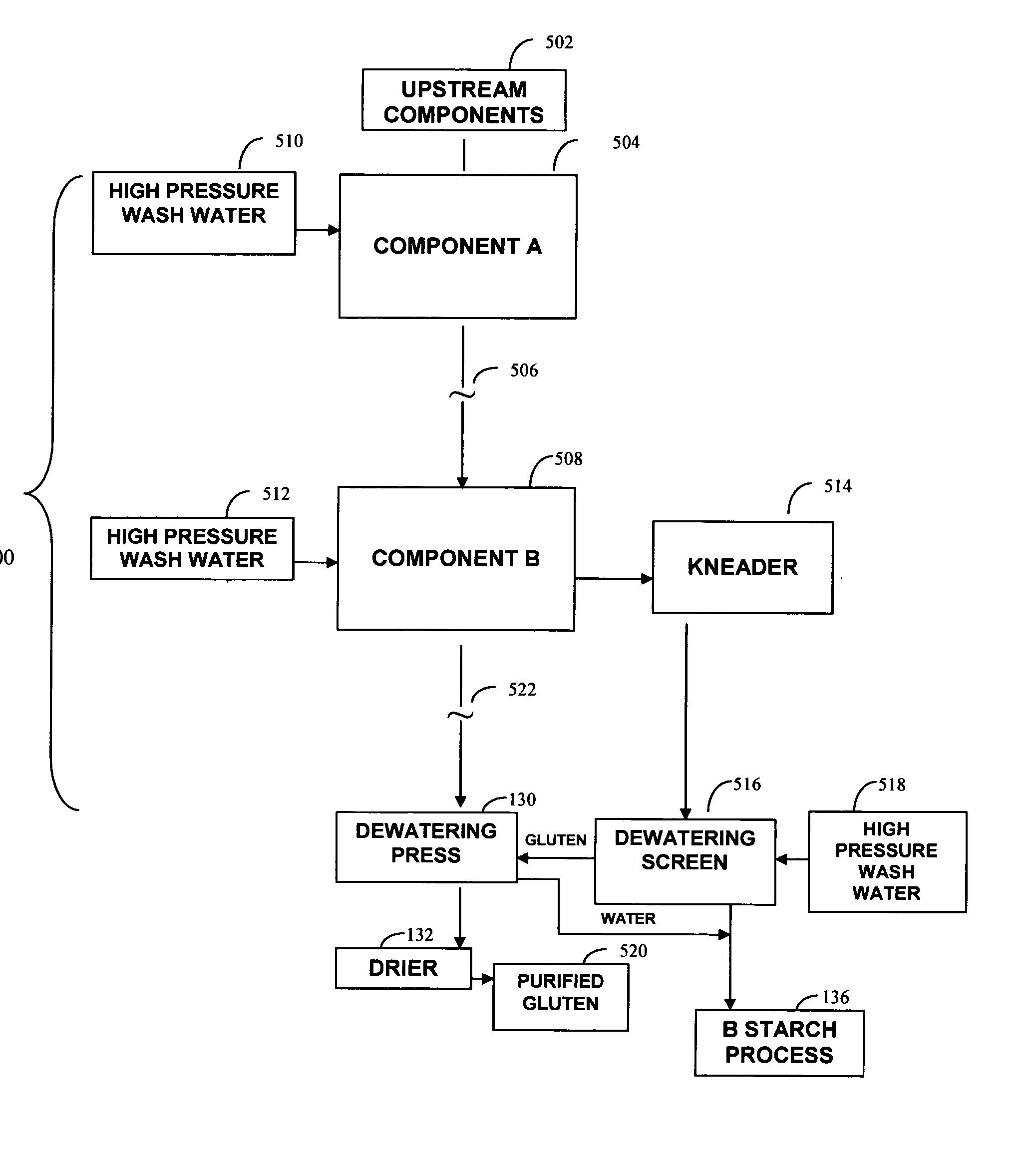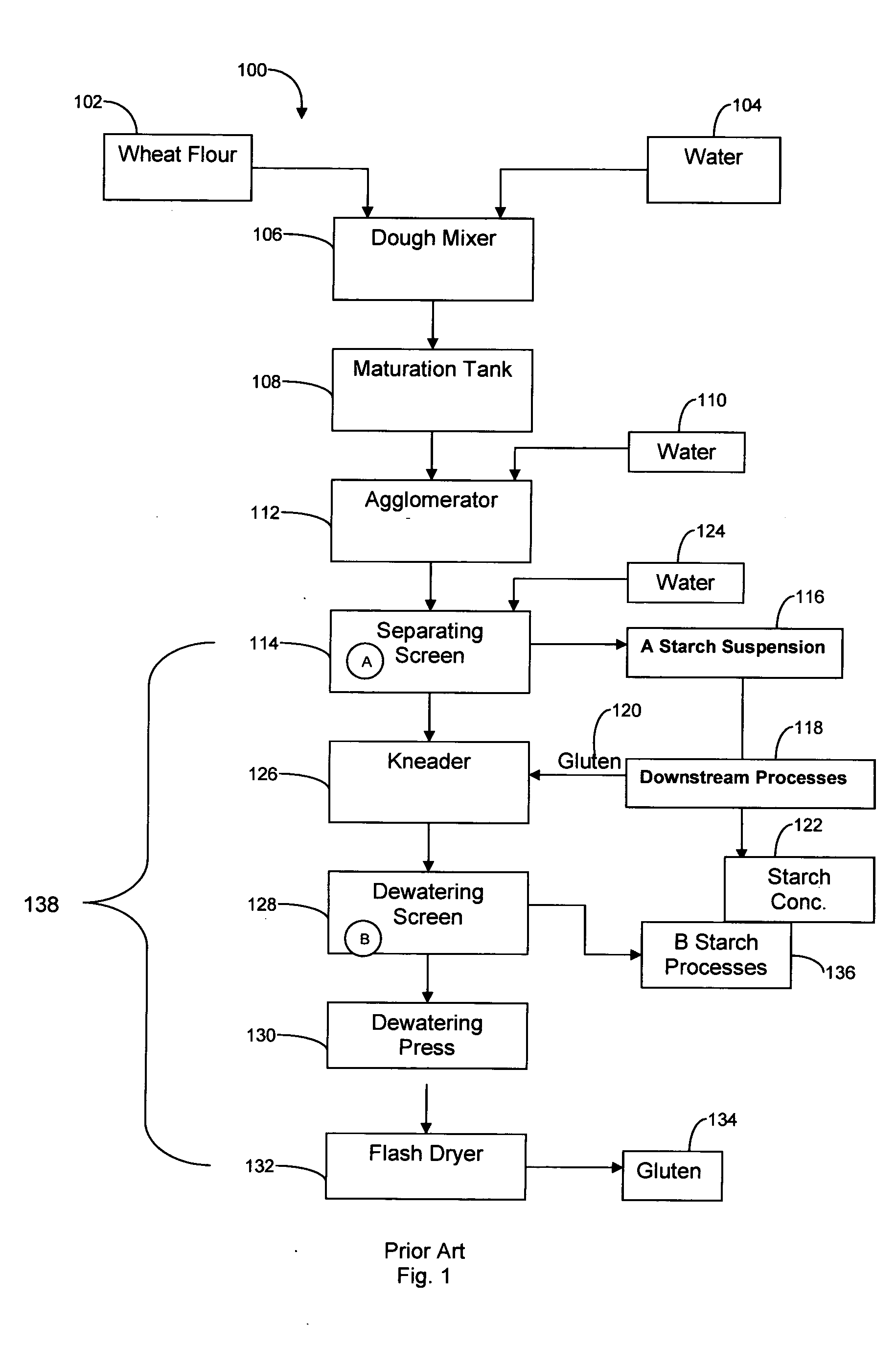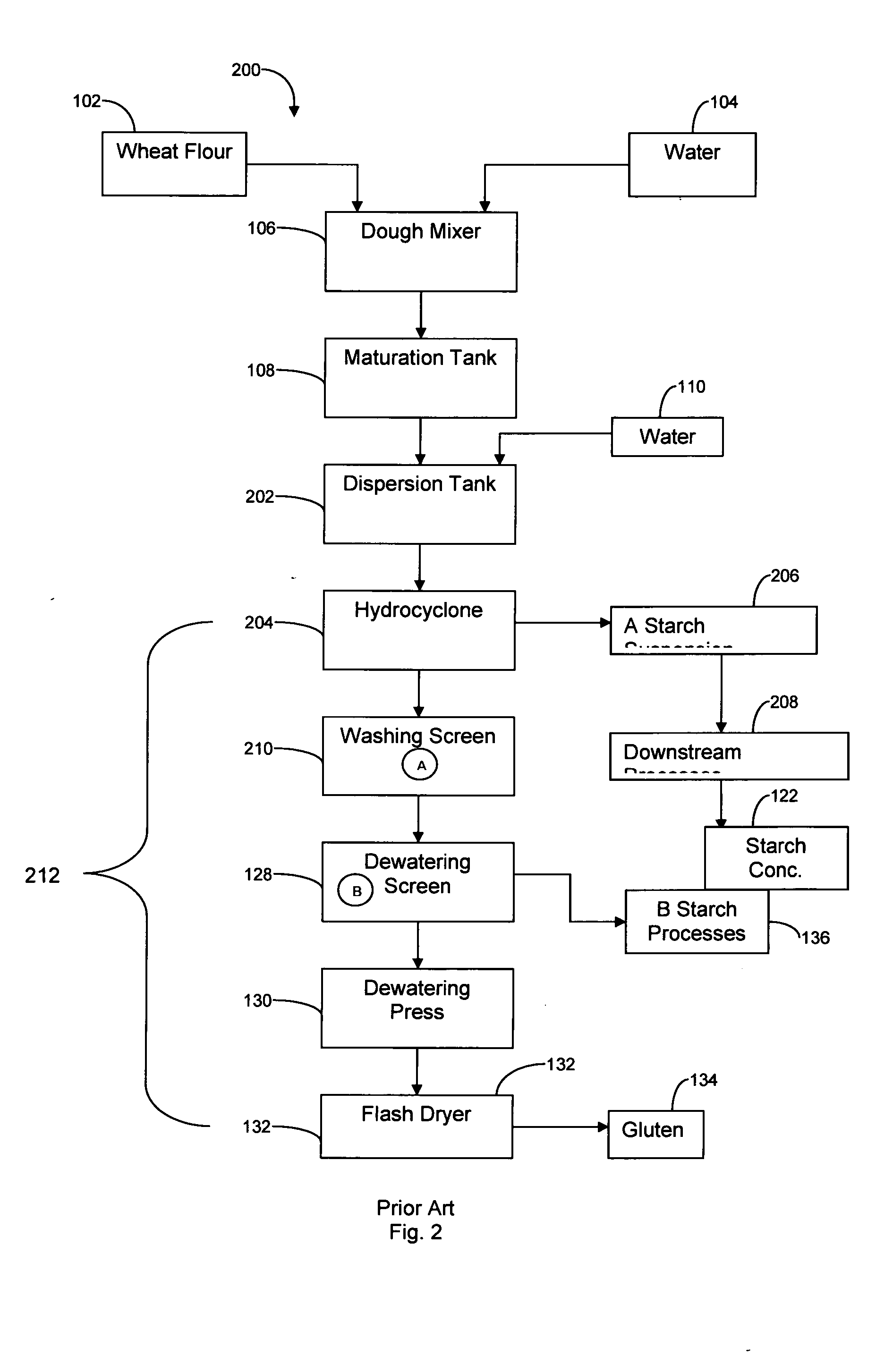Wheat protein isolates and their modified forms and methods of making
a technology which is applied in the field of isolates of protein and starch constituents from wheat flour, can solve the problems of difficult and ecologically effective disposal of water volume, complicated starch recovery, and high water consumption
- Summary
- Abstract
- Description
- Claims
- Application Information
AI Technical Summary
Benefits of technology
Problems solved by technology
Method used
Image
Examples
example 1
[0073] A manufacturing plant was equipped with industrial scale equipment set up in the manner shown schematically in FIG. 6. Components included commercially available equipment. Water and wheat flour feeds were respectively processed at 19,200 lbs per hour and 24,000 lbs per hour. High pressure water washes 510, 512, and 518 were each applied using water at 80-100 psi discharging through a spray nozzle positioned 12-18 inches from the screen. Gluten yield was 2,880 lbs per hour. Assay of the gluten product showed that the purified gluten (wheat protein isolate) had a protein content of greater than 90% by weight (Nx6.25, dry basis). Process water consumption was 4-5 lbs of water per pound of flour feed.
example 2
[0074] A manufacturing plant was equipped with industrial scale equipment set up in the manner shown schematically in FIG. 7. Components included commercially available equipment. Water and wheat flour feeds were respectively processed at 14,400 lbs per hour and 18,000 lbs per hour. High pressure water washes 510, 512, and 518 were each applied using water at 80-100 psi discharging through a spray nozzle positioned 12-18 inches from the screen. Gluten yield was 2,160 lbs per hour. Assay of the gluten product showed that the purified gluten (wheat protein isolate) had a protein content greater than 90% by weight (Nx6.25, dry basis). Process water consumption was 5-6 lbs of water per pound of flour feed.
example 3
[0075] 1. The process configuration used in this Example is illustrated schematically in FIG. 13. [0076] 2. 2,500 lbs. of re-agglomerated protein (30-33% solids) from Step 3 of Example 28, wet gluten from the dewatering press (130) of FIGS. 5-10, or wet gluten from the dewatering press (120) of FIG. 12 was transferred to a tank with a recirculating pump. [0077] 3. Lactic acid (5 lbs.) and acetic acid (5 lbs.) were added to the tank. [0078] 4. The mixture was recirculated for 1 hour, or until the doughy mass of protein is liquefied. [0079] 5. Sodium metabisulfite (0.2-1.0 lbs.), sodium ascorbate (0.2-1.0 lbs.), and sugar ester (5-9 lbs.) were added. [0080] 6. The recirculation process was continued for 90 minutes. [0081] 7. The slurry was then flash-dried into a wheat protein isolate powder with greater than 90% protein content (Nx6.25, dry basis), and pH of 4.0-4.5.
PUM
| Property | Measurement | Unit |
|---|---|---|
| Percent by mass | aaaaa | aaaaa |
| Percent by mass | aaaaa | aaaaa |
| Pressure | aaaaa | aaaaa |
Abstract
Description
Claims
Application Information
 Login to View More
Login to View More - R&D
- Intellectual Property
- Life Sciences
- Materials
- Tech Scout
- Unparalleled Data Quality
- Higher Quality Content
- 60% Fewer Hallucinations
Browse by: Latest US Patents, China's latest patents, Technical Efficacy Thesaurus, Application Domain, Technology Topic, Popular Technical Reports.
© 2025 PatSnap. All rights reserved.Legal|Privacy policy|Modern Slavery Act Transparency Statement|Sitemap|About US| Contact US: help@patsnap.com



